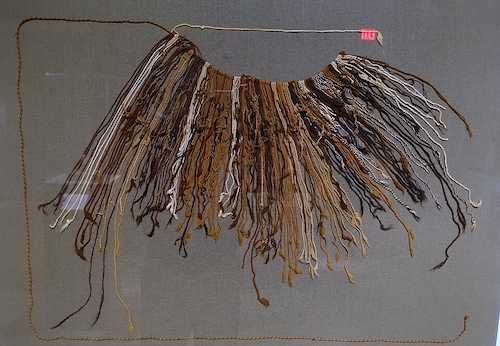Civilizations Built Through Innovation and Belief
Across the Americas, Indigenous civilizations developed complex societies rooted in their environments, spiritual beliefs, and scientific understanding. From the Maya and Aztec in Mesoamerica to the Inca in the Andes, and the Mississippian peoples in what is now the southeastern and midwestern United States, these cultures built cities, engineered systems for survival, and developed religious traditions that guided daily life, leadership, and identity.
Engineering and Innovation in Daily Life
Indigenous technologies were deeply tied to geography and need. The Inca mastered life in the rugged Andes Mountains with a vast road system—over 20,000 miles of stone paths, bridges, and stairways that connected cities, farms, and sacred sites. These roads enabled fast communication, the movement of armies, and the transportation of goods across their mountain empire. They also used a record-keeping tool called quipu, made from knotted cords, to help manage communication, trade, and census information across the empire.

In Mesoamerica, the Aztec engineered the city of Tenochtitlán on Lake Texcoco. Using chinampas, or floating gardens, they created farmland on shallow lakebeds. These gardens allowed the Aztec to grow food near the heart of the city and support a large population in an otherwise difficult environment.
The Maya, known for their work in astronomy and complex writing systems, developed a detailed calendar that tracked religious festivals, farming cycles, and celestial events. They recorded their discoveries and beliefs in codices—painted books filled with glyphs and symbols used by priests, rulers, and astronomers.

In the eastern part of North America, Mississippian cultures—centered around large city-states like Cahokia (near modern-day St. Louis)—built enormous earthen mounds. These served as platforms for temples and homes of religious leaders. Some mound structures aligned with the sun’s movement and may have helped communities track seasonal changes for farming and ceremonies.
Spiritual Beliefs as a Cultural Foundation
Religion shaped every part of life in these civilizations—from city planning and politics to agriculture and leadership. For the Maya, spiritual life was closely tied to the movement of the stars. Priests used astronomy to plan religious events, and temples were built to align with important celestial moments.
The Aztec believed their gods controlled the forces of nature and time. Large temples, located in the center of their cities, were the sites of public festivals, prayers, and sacrifices. These ceremonies were seen as necessary to keep the universe in balance and maintain the favor of the gods.
The Inca believed their emperor was descended from Inti, the sun god. Religion unified their vast empire. They built temples with precisely cut stones—many aligned with the sun or sacred mountains—and used religious celebrations to connect communities across great distances.
For the Mississippian peoples, religion and government were closely linked. Priests and leaders lived atop mounds and performed rituals that brought people together for shared worship. Their cities often had large plazas and structures like Woodhenge, which may have marked solar events and guided planting cycles.
A Way of Life Shaped by Both Science and Spirit
In these Indigenous civilizations, technology and religion were not separate—they worked together. Religious beliefs influenced how cities were built, when to plant crops, and how leaders ruled. Engineering projects reflected spiritual meanings, and sacred traditions shaped the use of science and mathematics.
From mountain roads and calendar systems to temple mounds and floating farms, these achievements were more than survival strategies—they were part of deeply spiritual ways of life that continue to shape Indigenous cultures today.
